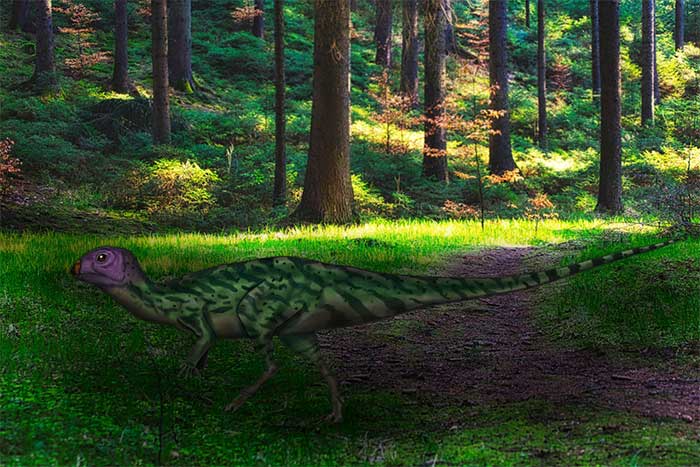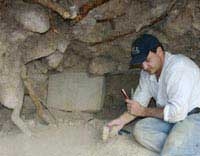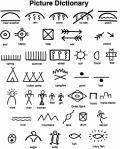The fossilized remains of a 145-million-year-old creature have been brought back from the Phu Kradung formation in Kalasin Province, Thailand. This represents the earliest known species of the Neornithischia dinosaur group in Southeast Asia.
According to Sci-News, this species is entirely new and has been named Minimocursor phunoiensis. It belongs to a large group of dinosaurs known as Neornithischia (new bird-hipped dinosaurs), which lived during the late Jurassic period.
Researcher Sita Manitkoon from Mahasarakham University (Thailand), the lead author of the study, stated that this is one of the most complete dinosaur specimens found in Southeast Asia, with crucial parts such as vertebrae and limb bones nearly intact.

Minimocursor phunoiensis in the dense forests of Thailand 145 million years ago – (Graphic image from SCI-NEWS).
The fossil remains include almost all the bone joints, a critical factor that helps paleontologists reconstruct the creature and describe how it moved in the past.
The Phu Noi area in Kalasin Province, Thailand is also a significant “fossil treasure trove,” where scientists hope to find more specimens.
“The discovery of this dinosaur provides new data on biodiversity, geobiology, and the early evolutionary history of Neornithischia from the late Jurassic to the early Cretaceous period.”
The discovery in Thailand has helped complete the puzzle regarding this dinosaur species. Although its shape is quite bizarre and has been reconstructed by scientists in a frightening green-purple hue, it was a relatively gentle herbivore, smaller than most other dinosaurs.
Some of its relatives have also been found in other parts of Asia, with the richest finds located in Sichuan Province, China.
The initial study has just been published by Thai scientists in the scientific journal Diversity. They also promise more exciting announcements as some additional bones of the same species are still being processed, including the skull of another specimen.





















































